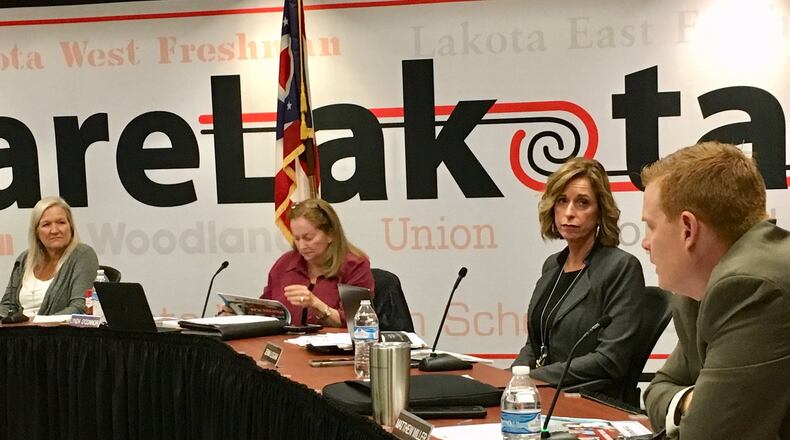Twice a year Ohio law requires public school systems to make five-year projections of its budgets and to have those forecasts approved by local school boards.
The 16,500-student Lakota district, which is the largest suburban school system in southwest Ohio, has had six consecutive years of balanced budgets, but Jenni Logan, treasurer of the district, told the board that it may face a $3.7 million deficit in 2023.
But Logan stressed repeatedly to the board that her projections through the next five years includes many and significant variables that may affect the forecast.
Among them, Ohio’s next biennium budget, which will be done in June, and another two-year budget to be done in 2021, after a new governor who will replace John Kasich, who is term-limited out of office, possible changes in the state’s school funding formula and a new Lakota teachers’ labor contract in two years.
State funding alone comprises almost 30 percent of the district’s annual operating budget, which this year stands at $214.5 million.
“There are a lot of unknowns here,” Logan told the board, describing her forecast as “very conservative.”
But veteran Lakota Board of Education member Lynda O’Connor told her colleagues she could not vote to approve the financial forecast without first getting a binding agreement by the board that it will begin now in addressing 2023’s projected shortfall of $3.7 million.
Moreover, O’Connor said she wanted the district to make budget changes that would eliminate the 2023 shortfall by the time Lakota is required to make its next state-ordered, five-year financial forecast in May.
Lakota’s current financial stability, argued O’Connor, came only after years of historic budget cuts in personnel and services – reductions, she said, the school community wants to avoid.
The possibility of any deficit – even five years in the future – “is a huge red flag,” she said.
O’Connor was the lone board vote rejecting the financial forecast.
The forecast was approved by a 3-1 vote with board member Todd Parnell out of town on business.
There were no projections by district officials of returning to Lakota residents and seeking any new tax increases.
The district saw voters approve a new operating levy in 2013 after more than $20 million in budget cuts occurred in years prior as voters repeatedly rejected proposed tax increases.
Board Vice President Brad Lovell argued that numerous variables that could easily change the current forecast by 2023.
“It (forecast) is a shot in the dark right now,” said Lovell. “That fifth year is a more unreliable number (budget) number than years two, three and four.”
But O’Connor countered, “It’s been a long, uphill climb to financial stability. You don’t spend more than you take in.”
Lakota Superintendent Matt Miller described the district’s finances as stable as they have been in recent years and cautioned that while “there is some red (deficit) in that fifth year, a lot of things can happen between now and then.”
About the Author
